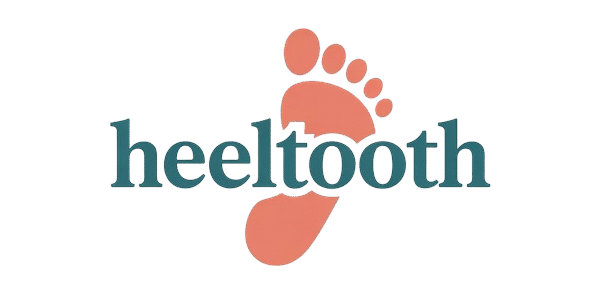Plantar fasciitis is well known for causing intense heel pain, but many people don’t realize it can also lead to calf pain. This happens because the plantar fascia, a thick band of tissue along the bottom of the foot, is connected to the Achilles tendon and calf muscles. When the fascia becomes inflamed, it can cause tightness and discomfort not only in the foot but also in the calf. Understanding how foot biomechanics link the plantar fascia to the calf helps explain why calf muscle soreness often accompanies plantar fasciitis. Recognizing this connection is key to effective treatment and lasting relief.
Does Plantar Fasciitis Cause Calf Pain?
Many patients ask, “Can plantar fasciitis cause calf pain?” The answer lies in the way your foot connects to your leg. When the plantar fascia is inflamed, it pulls on the Achilles tendon, which attaches to the calf muscles. This tension causes soleus muscle tension and sometimes pain in the gastrocnemius muscle. This is why calf pain often shows up with plantar fasciitis.
The pain you feel in your calf is a type of referred pain caused by the body’s interconnected structure. When one part, like the plantar fascia, suffers irritation, nearby muscles and tendons react. This can create calf muscle soreness. People with plantar fasciitis often report feeling stiffness or tightness not only in their foot but also traveling up their calf.
How Is the Plantar Fascia Connected to the Calf?
The plantar fascia is a thick band of tissue running along the bottom of your foot. It connects your heel bone to your toes and works closely with the Achilles tendon. The Achilles tendon links the plantar fascia to your calf muscles, especially the gastrocnemius and soleus muscles. This connection is vital for walking, running, and standing.
Because the plantar fascia and calf muscles are part of the same posterior chain, tension in one affects the other. For example, if you have fascia irritation in your foot, the calf muscles tighten to compensate. This change in foot biomechanics can increase pressure on your calf, leading to pain and discomfort.
Recognizing Plantar Fasciitis Beyond Heel Pain
People often think plantar fasciitis only causes pain in the heel, but it can show up in other ways. Besides heel pain, you may notice arch pain, stiffness in your foot, or even tenderness near your Achilles tendon. Some patients feel tightness or aching in their calf muscles, which are often overlooked as symptoms.
A case study showed a runner who had been treating heel pain unsuccessfully. The real problem was tight calf muscles caused by plantar fascia strain. After focusing on the calf with trigger point therapy and physical therapy, the runner found relief. This example shows how plantar fasciitis symptoms can extend beyond just the heel area.
Where Is the Trigger Point in the Calf for Plantar Fasciitis
Trigger points related to plantar fasciitis usually form in the gastrocnemius and soleus muscles. These are the large calf muscles responsible for pushing off the ground when you walk or run. When these muscles are tight, they develop small, painful knots called trigger points.
A simple table can show the common trigger points and symptoms:
| Muscle | Trigger Point Location | Symptoms |
|---|---|---|
| Gastrocnemius | Upper calf, near the knee | Sharp calf pain, tightness |
| Soleus | Lower calf, just above the heel | Deep ache, stiffness |
Releasing these points through calf massage or foam rolling can reduce pain and improve mobility.
Treatment Options for Plantar Fasciitis and Calf Pain
Treating plantar fasciitis and the related calf pain requires a mix of methods. Stretching exercises focused on the calf and plantar fascia are essential. Using custom orthotics and supportive footwear can ease pressure on your foot and calf. Many also benefit from night splints that keep the foot stretched during sleep.
Physical therapy offers hands-on treatments like trigger point therapy and guided strengthening exercises. Newer treatments like shockwave therapy and dry needling target deep tissue irritation effectively. For stubborn cases, PRP injections (platelet-rich plasma) can encourage healing.
When to See a Doctor for Plantar Fasciitis and Tight Calf Muscles
You should consult a doctor if your pain worsens despite home care or if you experience numbness or swelling. A podiatric evaluation or an orthopedic consultation helps rule out other musculoskeletal conditions like Achilles tendinitis or nerve compression. Doctors often use diagnostic imaging and gait analysis to understand the root cause better.
Early diagnosis improves recovery and prevents overuse injuries. If your heel pain is not going away or you have unusual calf pain, don’t wait. Timely medical care can make a big difference.
How to Prevent Calf Muscle Pain and Plantar Fasciitis
Prevention starts with good daily habits. Wearing supportive footwear that fits your foot type reduces stress on the plantar fascia and calf. A regular mobility routine including stretching exercises for your calves and feet keeps muscles flexible. Gradually increasing activity intensity helps avoid sudden strain.
Products like custom orthotics and plantar fascia taping provide extra support during high-impact activities. Staying hydrated and maintaining a healthy weight also help reduce stress on your feet and legs.
Common Conditions Mistaken for Plantar Fasciitis Causing Calf or Heel Pain
Several other conditions can mimic plantar fasciitis symptoms. Achilles tendinitis causes pain near the heel and calf but involves the tendon itself. Tarsal tunnel syndrome leads to nerve compression causing numbness or burning sensations. Sometimes, heel spurs or calf strain can be confused with plantar fasciitis.
Another condition, sciatica, causes leg pain but originates in the lower back. It’s crucial to get a proper diagnosis to avoid incorrect treatment. Misdiagnosis often leads to prolonged pain and frustration.

Alternative and Advanced Treatment Options for Plantar Fasciitis and Calf Pain
For cases that resist traditional treatment, advanced therapies offer hope. Shockwave therapy uses sound waves to stimulate healing in the fascia and calf muscles. Dry needling targets tight muscles and trigger points, releasing tension. PRP injections bring growth factors directly to injured tissue.
Experts from clinics like the Mayo Clinic and Cleveland Clinic recommend combining these with physical therapy for best results. Custom orthotics designed after a detailed podiatric evaluation ensure your foot mechanics support long-term recovery.
Final Thoughts on Can Plantar Fasciitis Cause Calf Pain?
Understanding the connection between plantar fasciitis and calf pain helps you take early action. This pain is part of how your body adapts to foot inflammation and altered foot biomechanics. Using proper treatment and prevention strategies reduces discomfort and speeds healing. If you feel calf pain along with heel pain, don’t ignore it. Getting a professional diagnosis and following a comprehensive plan is the key to staying active and pain-free.
FAQs
Does plantar fasciitis cause calf discomfort?
Yes, plantar fasciitis can cause calf discomfort due to tension in connected muscles and the Achilles tendon.
How do you get rid of tight calf muscles from plantar fasciitis?
Stretching, foam rolling, calf massage, and physical therapy help relieve tight calf muscles caused by plantar fasciitis.
What can be mistaken for plantar fasciitis?
Conditions like Achilles tendinitis, tarsal tunnel syndrome, heel spurs, and calf strains are often mistaken for plantar fasciitis.
What is stage 3 plantar fasciitis?
Stage 3 plantar fasciitis is a chronic phase where pain is constant, inflammation persists, and tissue damage may occur.
Welcome to Heel Tooth! I’m Lee Marvin.

